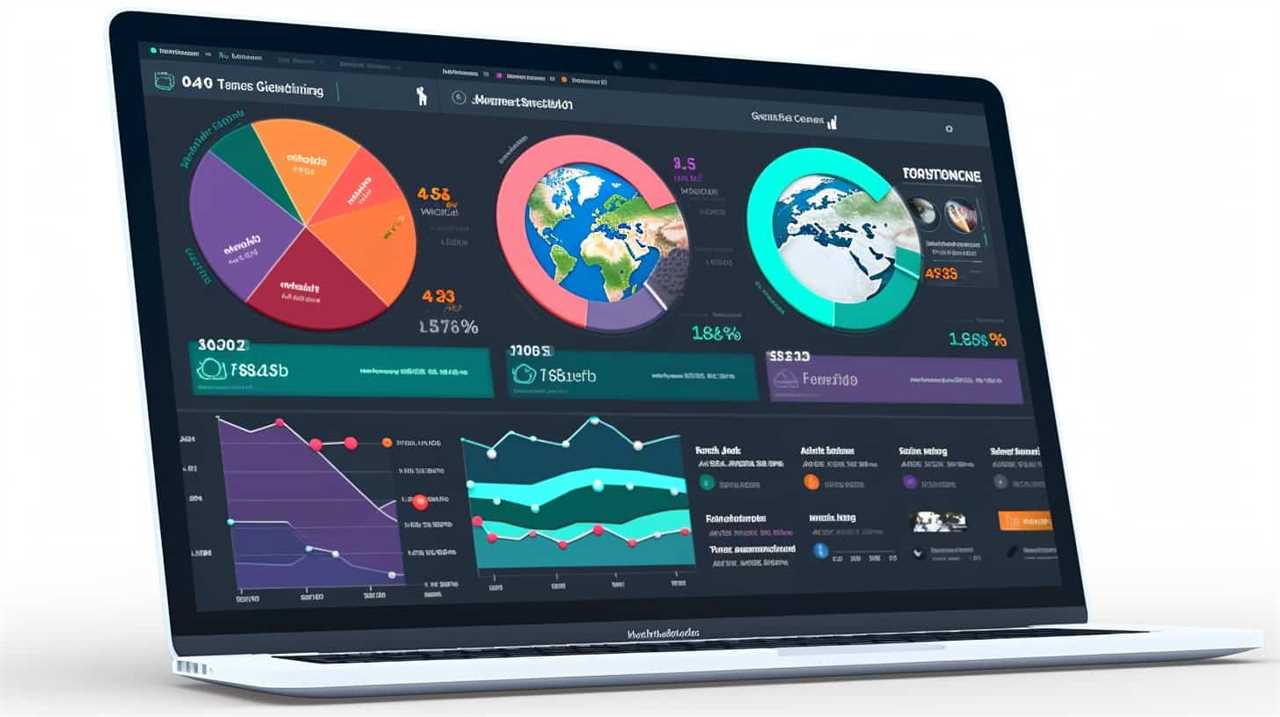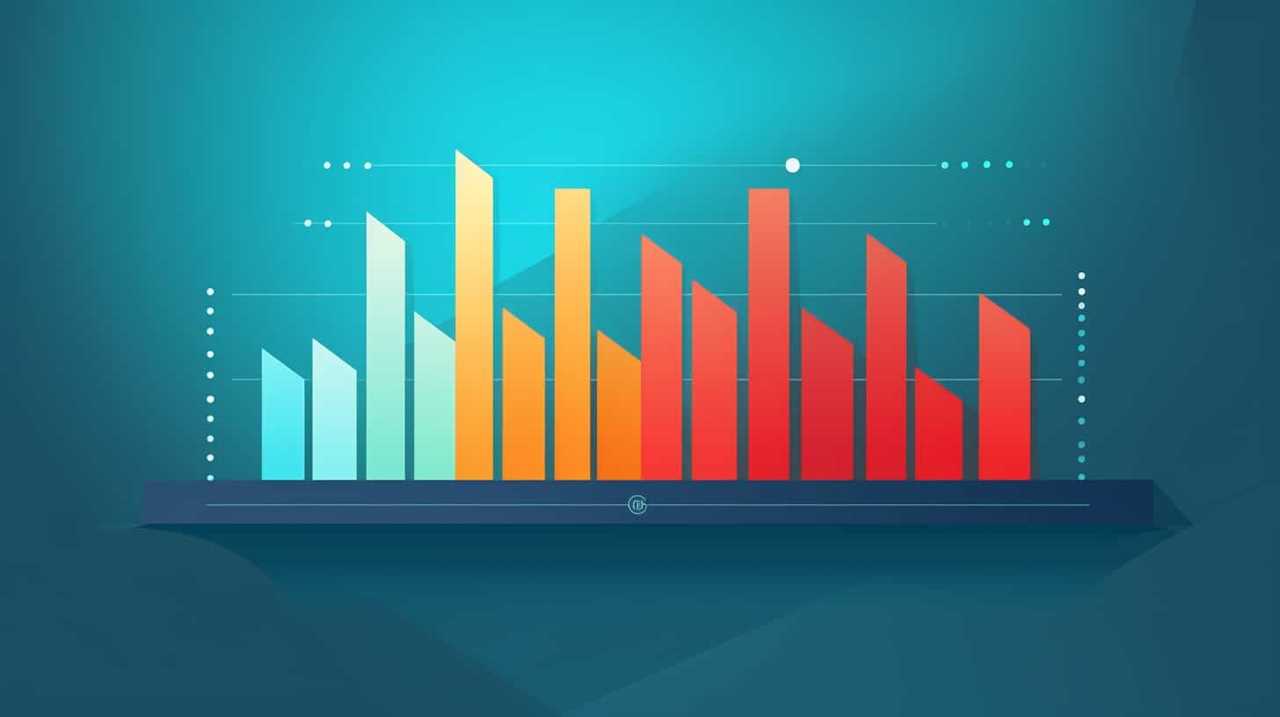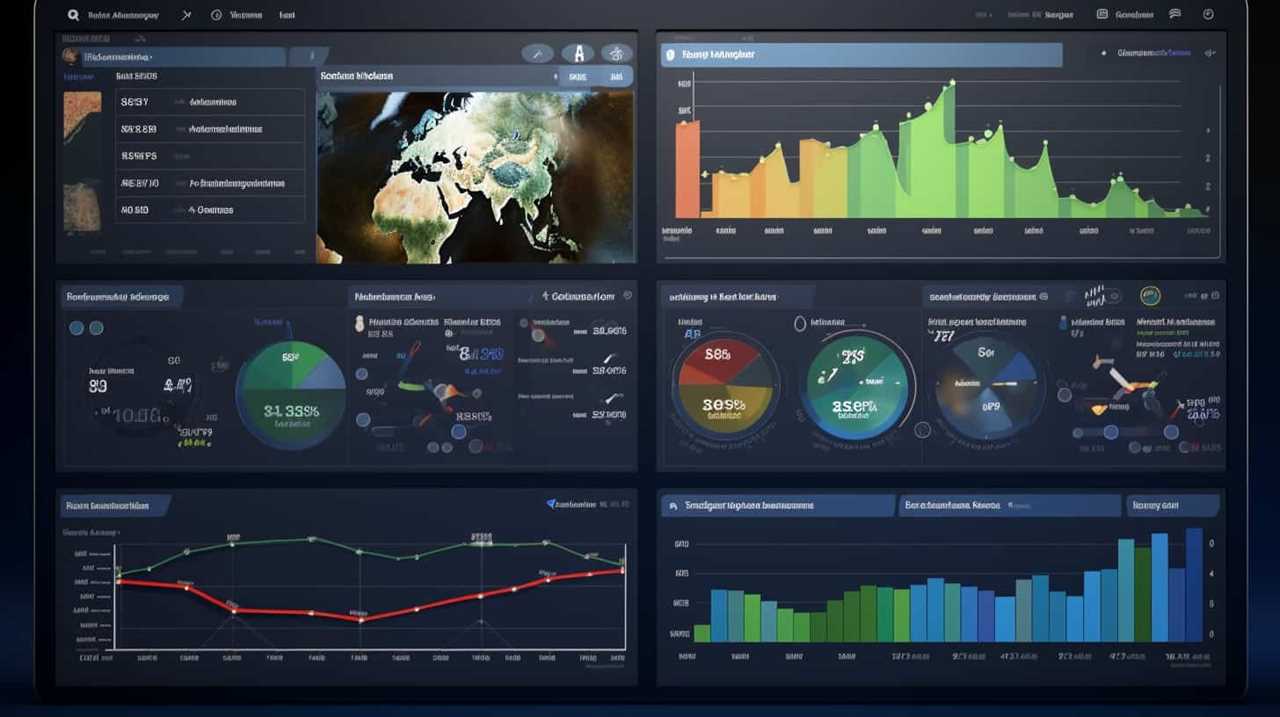Are you exhausted from sifting through numerous SEO strategies that claim to work but ultimately disappoint? Your search ends here.
In this article, we present to you 8 holistic techniques for effective on-page SEO. We’ve done the research and tested these methods ourselves, so you can trust that they work.
From keyword optimization to mobile-friendliness, we cover it all.
Get ready to take your SEO game to the next level and achieve mastery in no time.

Key Takeaways
- Conduct thorough competitive analysis to gain insights into industry keyword strategies
- Prioritize content strategy for improving organic search rankings
- Optimize URL structure for maximum SEO benefits
- Implement meta tags optimization techniques for better on-page SEO performance
Keyword Research and Optimization
In our experience, conducting thorough keyword research and optimization is crucial for achieving effective on-page SEO results.
Before diving into the world of keywords, it’s important to start with competitive analysis. By analyzing your competitors’ keyword strategies, you can gain valuable insights into what’s working in your industry. This analysis will help you identify gaps and opportunities for your own keyword optimization.
Once you have a clear understanding of your competitors, it’s time to focus on keyword density. Keyword density refers to the number of times a keyword appears on a webpage in relation to the total number of words. It’s important to strike a balance between using keywords enough to optimize your content, without overstuffing it and risking a penalty from search engines.
Content Creation and Optimization
To effectively optimize on-page SEO, we prioritize content creation and optimization by utilizing a holistic approach.

A well-executed content strategy is crucial for improving organic search rankings and driving targeted traffic to your website.
When creating content, it’s important to consider SEO best practices to ensure maximum visibility and engagement. This includes conducting keyword research to identify relevant and high-performing keywords to incorporate into your content.
Additionally, optimizing your content involves structuring it in a way that’s easy for search engines to understand, such as using headings, subheadings, and bullet points.
It’s also important to regularly update and refresh your content to keep it relevant and valuable to your audience.

URL Structure and Optimization
When it comes to URL structure and optimization, there are two main points to consider:
- Short vs long URLs: Short URLs are generally preferred as they’re easier to read, remember, and share.
- Keyword placement in URLs: Including relevant keywords in your URLs can help search engines understand the content of your page and improve its visibility in search results.
Short Vs Long URLs
We found that shorter URLs tend to have better optimization for search engines. URL length has a significant impact on SEO. Shorter URLs are easier for search engines to crawl and understand, making it more likely for them to be ranked higher in search results. When URLs are concise and focused, they also tend to contain more relevant keywords, which further improves their visibility and relevance to search queries.
Additionally, shorter URLs are more user-friendly, making them easier to share and remember. In contrast, longer URLs can be confusing, difficult to read, and may contain unnecessary parameters or irrelevant information.
As we move on to the next section about keyword placement in URLs, we’ll explore how to optimize URL structure for maximum SEO benefits.

Keyword Placement in URLs
In order to optimize the structure and performance of URLs, it’s essential to carefully consider the placement of keywords. URL best practices dictate that keywords should be included in the URL to create SEO friendly URLs. By including relevant keywords in the URL, it helps search engines understand the content of the page and improves the chances of ranking higher in search results.
When choosing keywords for the URL, it’s important to focus on the main topic or theme of the page. Additionally, it’s recommended to keep URLs concise and descriptive, avoiding unnecessary characters or numbers.
Following these guidelines for keyword placement in URLs can greatly enhance the overall SEO strategy and improve website visibility.
Meta Tags and Title Optimization
When it comes to on-page SEO, meta tags play a crucial role in informing search engines about the content of a webpage.

Optimizing the title tags is equally important as it’s the first thing that users see in search engine results.
Meta Tags Importance
To optimize the effectiveness of on-page SEO, we should prioritize the importance of meta tags through the process of meta tags and title optimization. Meta tags play a crucial role in improving search engine visibility and attracting relevant traffic to a website. By following meta tags best practices and implementing meta tags optimization techniques, we can enhance the overall performance of our on-page SEO strategy.
Here is a table highlighting the importance of meta tags:
| Meta Tag | Importance |
|---|---|
| Title tag | Helps search engines understand the topic and relevance of the web page |
| Description | Provides a concise summary of the page’s content |
| Keywords | Specifies the main keywords related to the page’s content |
| Robots | Controls how search engines crawl and index the page |
Title Tag Optimization
Our first step in optimizing title tags for effective on-page SEO is to understand their crucial role in attracting organic traffic and improving search engine visibility. Title tags play a significant role in conveying the relevance and context of a web page to search engines and users.

Here are some key points to consider when optimizing title tags:
- Optimal length for title tags: Aim for a length of around 50-60 characters to ensure that the entire title is displayed in search engine results pages (SERPs).
- Importance of using keywords in title tags: Including relevant keywords in your title tags helps search engines understand the topic of your page and improves its visibility in search results.
- Use compelling and descriptive language: Craft a title that grabs attention and accurately represents the content on your page.
- Avoid keyword stuffing: While using keywords is important, it’s crucial to maintain a natural and user-friendly title.
With title tags optimized, the next step is to focus on internal linking and navigation optimization.
Internal Linking and Navigation Optimization
One important aspect of effective on-page SEO is optimizing internal linking and navigation for improved user experience and search engine visibility. Internal linking strategies involve creating links within a website that connect different pages together. This helps search engines understand the structure and hierarchy of the website, making it easier for them to crawl and index the content. It also helps users navigate through the website, improving their overall experience. Anchor text optimization is another important factor in internal linking. By using relevant and descriptive anchor text, you can provide more context to both search engines and users about the linked page’s content. This can improve the page’s visibility in search results and encourage users to click on the link.
Below is a table summarizing some effective internal linking strategies and anchor text optimization techniques:

| Internal Linking Strategies | Anchor Text Optimization |
|---|---|
| Use descriptive anchor text | Avoid generic anchor text |
| Link to relevant pages | Utilize keywords |
| Limit the number of links | Make anchor text natural |
| Use a logical site structure | Keep it concise |
| Regularly check for broken links | Avoid over-optimization |
Image Optimization and Alt Tags
Optimizing images and utilizing alt tags are crucial for enhancing on-page SEO. When it comes to image optimization, there are a few key techniques to keep in mind:
- Image compression techniques: Compressing your images without sacrificing quality is essential for improving page load speed. This can be achieved through tools like Photoshop or online image compression services.
- Alt tag best practices: Alt tags are used to provide alternative text for images, allowing search engines to understand what the image is about. Make sure to use descriptive and keyword-rich alt tags that accurately describe the image content.
- Relevant file names: When saving your images, use descriptive file names that include relevant keywords. This helps search engines understand the context of the image.
- Image file size: Keep your image file sizes as small as possible without compromising quality. Large image files can slow down page load speed, negatively impacting SEO.
Mobile-Friendliness and Responsive Design
Implementing mobile-friendliness and responsive design is crucial for enhancing on-page SEO. In today’s digital landscape, having a mobile-friendly website is no longer an option but a necessity. With the introduction of mobile-first indexing by search engines, it is essential to prioritize the mobile user experience to improve search rankings and overall website performance.
A mobile-friendly website ensures that your site is accessible and user-friendly across different devices and screen sizes. Responsive design allows your website to adapt and provide a seamless experience to users, regardless of the device they are using. This not only improves user engagement but also reduces bounce rates and increases the chances of conversions.
To emphasize the importance of mobile-friendliness and responsive design, consider the following table:

| Benefits of Mobile-Friendliness and Responsive Design |
|---|
| Improved search rankings |
| Enhanced user experience |
| Increased mobile traffic |
| Reduced bounce rates |
| Higher conversion rates |
Page Speed Optimization
To improve our on-page SEO, we prioritize optimizing page speed through efficient loading times and minimal resource usage. Here are some key techniques we employ to achieve faster website loading:
- Caching: By utilizing caching techniques, we can store certain elements of our website so that they don’t need to be fetched from the server every time a user visits our site. This significantly reduces loading times and improves overall page speed.
- CDN implementation: Content Delivery Networks (CDNs) distribute our website’s static files across multiple servers around the world. This allows users to access these files from servers closest to their location, resulting in faster loading times.
- Image optimization: Compressing and resizing images helps reduce their file size without sacrificing quality, resulting in faster loading times.
- Minimizing HTTP requests: By reducing the number of HTTP requests made by a webpage, we can improve loading times and overall page speed.
Implementing these techniques won’t only enhance our on-page SEO but also provide a better user experience.
Frequently Asked Questions
How Does On-Page SEO Differ From Off-Page SEO and Which One Is More Important?
On-page SEO and off-page SEO are different strategies for improving website visibility. While both are important, on-page SEO focuses on optimizing website elements like content and meta tags, making it crucial for ranking higher in search engine results.
Can I Use the Same Keywords for Multiple Pages on My Website?
Yes, you can use multiple keywords for one page. However, it is important to choose the right keywords for each page to optimize its on-page SEO and improve its visibility in search results.

What Are Some Common Mistakes to Avoid When Optimizing My URL Structure?
When optimizing our URL structure for on-page SEO, we should avoid common mistakes such as using lengthy or irrelevant URLs. Best practices include using descriptive keywords, keeping URLs short, and organizing them logically.
Are Meta Tags Still Relevant for SEO in 2021?
Yes, meta tags are still relevant for SEO in 2021. They provide important information to search engines and impact rankings. Incorporating relevant keywords and optimizing meta tags can improve user experience and SEO performance.
How Can I Improve My Website’s Navigation to Optimize for Seo?
To improve our website’s navigation and optimize for SEO, we can implement clear and intuitive menus, utilize breadcrumb navigation, and include internal links. These techniques enhance user experience and help search engines crawl and index our site effectively.
Conclusion
In conclusion, implementing these holistic techniques for effective on-page SEO can greatly improve your website’s visibility and ranking on search engines.

By conducting thorough keyword research, optimizing your content and URLs, utilizing meta tags and internal linking, optimizing images and ensuring mobile-friendliness, you can enhance your website’s performance and attract more organic traffic.
So, why wait? Start implementing these techniques today and watch your website soar to new heights in the search engine rankings.










